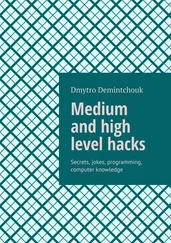I listened more closely when I heard that Rod had found a recently trafficked foot trail that was leading him over toward one of the French forts leftover from the Indochina war. Those old forts were readily identifiable by their unusual construction. They were made mostly out of earth that had been mounded up in either a diamond or triangle shape; inside the walls was a little parade ground with a flagpole, living quarters, and fighting chambers. These vacant fortifications were relics of the past, and nobody ever seemed to bother them or occupy them. That was why my ears perked up when I heard Rod say that he had seen movement inside.
I heard One Seven say to his gun, “I’m going around again to see if a party is going on down there that we weren’t invited to.”
Willis pulled his OH-6 into a hard right turn and rolled the ship so he could look straight down into the fort. I heard him again, “Damn, I just corralled myself a couple of Victor Charlies inside this old pile of dirt. I’m going to come around again and lay some 60 on them.”
As Rod spoke, in the background I could hear One Seven’s crew chief, Ken Stormer, let go with his door gun. Willis yelled, “I’m turning again. The dinks are running for cover in the wall, but Charlie Echo’s on ‘em with the 60. Shit! They just dove in a hole. We’ll get these two. Stand by, we’ll put some CS down on ‘em. Stand by, stand by. Son of a bitch, we’ve got a jam on the 60. Stand by.”
Willis apparently was hovering at the side of the entrance where the two enemy soldiers had disappeared into the fort’s wall area. The crew chief was shooting into the opening when his M-60 jammed.
It just happened that on that particular day, Stormer had brought along another weapon he had wanted to test fire. It was a CHICOM RPD, the Communist China version of the Russian PK .30-caliber machine gun. A quick glance at this weapon reminded you of the old U.S. Browning automatic rifle (BAR). It was a big, sturdy shooter with a bipod, but ammunition was fed to it through a drum magazine instead of a twenty-round box magazine as in the BAR. In an earlier action, Stormer had killed an enemy soldier who had been carrying the weapon, and the ARPs had liberated the RPD and brought it back to Stormer as a souvenir.
In the seconds that it took Stormer to shove his jammed M-60 aside and reach for his RPD, the two VC popped out of their concealment and threw a couple of hard AK-47 bursts at Willis’s hovering helicopter. The crew chief’s CHICOM went off in return, then we heard One Seven’s voice, about two octaves higher: “Taking fire, we’re taking fire. Hauling ass!”
There was a moment of dead silence on the radio. Then Ken Stormer’s frantic voice. “One Seven is hit,” he yelled. “We need some help!”
Stormer was intentionally transmitting outside the Loach. It was a good thing I could hear him because it was obvious that something had happened to the aircraft, or Willis, or both.
I quickly called my crew chief, Jim Parker, and my gun pilot, Dean Sinor (Three One), then announced a scramble to the Dau Tieng control tower and took off across the treetops of the Michelin.
The old French fort was located near the Boundary Road where it cut into the eastern side of the rubber plantation, about ten to twelve kilometers from Dau Tieng. I had been over it a number of times.
As I crossed the Michelin, I could see the Cobra circling in the distance. The gun pilot saw me and immediately gave me some assistance. “OK, One Six, I’ve got you coming off of Delta Tango. Turn left one zero degrees. One Seven will be at your twelve o’clock at two hundred yards.”
When I turned left the ten degrees, I saw Rod’s ship just as it was passing behind a bunch of trees. I poured on more coal. When I pulled in on Rod’s right wing, the first thing I noticed was Stormer hanging out of his door as though he was trying to reach up front to his pilot.
I could see Willis in the cockpit. He was moving, so I figured he was still able to fly the aircraft. But a couple of things were totally out of synch with Rod’s normal flying behavior. First, he was sitting upright, almost at attention, in his seat. That was unusual because Rod normally looked half-asleep as he flew: He slouched down in the pilot’s seat with the cyclic between his legs, and worked the stick with barely discernible wrist movements.
That was the other thing that seemed so wrong: Willis was going berserk with wild, exaggerated moves on the cyclic stick. His arms were jerking all over the cockpit as he violently threw the stick forward, then back into his gut, then to the right and back to the left. I could see that he was getting lateral movement on the ship with the wild left and right swings of the cyclic, but his frantic fore and aft movements were producing no longitudinal change. He couldn’t get the nose to go up or down and he couldn’t get lift or descent.
I tried to raise Willis on Uniform. “One Seven, are you hurt? Are you OK, One Seven? What the hell is going on with your bird?” All I got back was a series of hisses and sucking and gargling noises.
“Come on, One Seven,” I pleaded. “I’m right here on your wing… talk to me. Are you hit? Can you fly ‘er down?”
Again, nothing came back over my radio but a faint hissing sound, like escaping air, and more god-awful gargling noises. It sent chills down my spine. I thought I had the answer: He had been hit in the chest and his lungs were collapsing. No way was he going to get the ship down.
I couldn’t, however, explain why the cyclic wouldn’t control his ship. There are controls on the top of the OH-6 that translate the cockpit movements of the cyclic pitch stick to the rotor head and blades of the aircraft. The stick is linked to push-pull rods through valvelike mixers that end up tilting the rotor head in the direction you want the aircraft to go. Thinking that I might be able to see if something was wrong with the rotor swash plate, I kicked my ship closer to Rod’s and a little higher.
Some parts around the hub seemed to be moving in an odd way, but I couldn’t tell what was causing the pitch problem. One thing was obvious, however—Rod was going to have to get his ship down.
As I kept up my one-way conversation—”Hang with it, One Seven, you’re OK. Try to slow it down. OK, One, Seven, try to slow ‘er down…”—I was frantically looking for a hole in the jungle where Willis could put the bird down.
I radioed the Cobras. “Look, we’re in deep trouble down here. Better get Dustoff rollin’ because it looks like One Seven is going to crash this thing.”
Just then I looked up over the trees, and coming right up on our nose was an open area that looked about two hundred yards wide and maybe three hundred yards long. I practically pushed the transmit switch all the way through the stick and hollered, “Rod! Twelve o’clock, twelve o’clock. Take her down. Put it down, Rod… right at your twelve o’clock. Set ‘er down!”
He must have heard me. I saw his arms and elbows flailing wildly trying to fight the controls, trying to get the aircraft to descend. Finally his nose started to come up a little, but that seemed to start his tail swinging.
I inched in closer on his right wing and tried to talk him down. “You’re OK,” I said. “Come on down, One Seven. You’re doing OK now, drop her down. Take her on down, Rod.”
I knew he was talking back to me because I could see his lips moving behind his mike. But I still couldn’t hear anything except those terrible noises. I tried to see if he showed any other evidence of being shot. I didn’t see any blood. Though he looked scared as hell, he didn’t appear to be in great physical pain, as he would if he had a bullet through his chest.
Then his nose dropped. What he apparently had done, in desperation, was chop his throttle. That seemed to slow him down enough to do a hovering autorotation, which was enough to put his bird down in the open field before he overflew it.
Читать дальше












